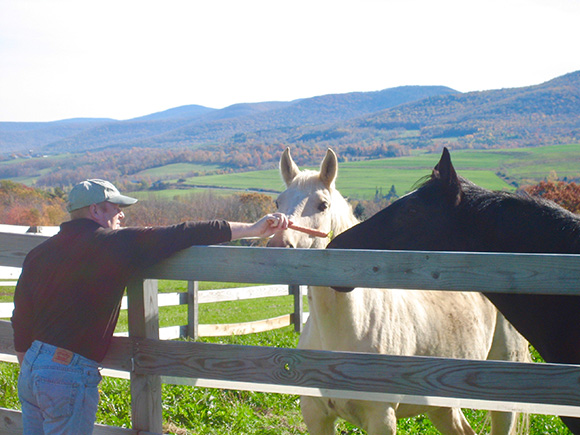Tips For Horsekeeping On A Small Acreage
By Nikki Alvin-Smith
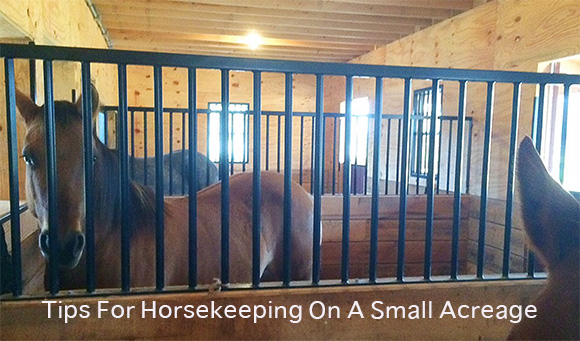
When the Covid crisis hit and commercial horse farms were closed for access to the boarders of horses at livery, the reality of being forced to leave the full care of their horses to others and being denied time with their equine partners hit home with force.
As a result many horse owners have determined not to be caught short again and have made the decision to have a ‘Plan B’, the option to keep their horses at home.
Not everyone has a large property but it is possible to keep a horse on a fairly small acreage successfully. In Europe, especially the horse loving Britons, horses are regularly stabled in small backyards and when exercise and training time comes around the riders simply ride on the road and hack to bridleways that criss-cross the nation.
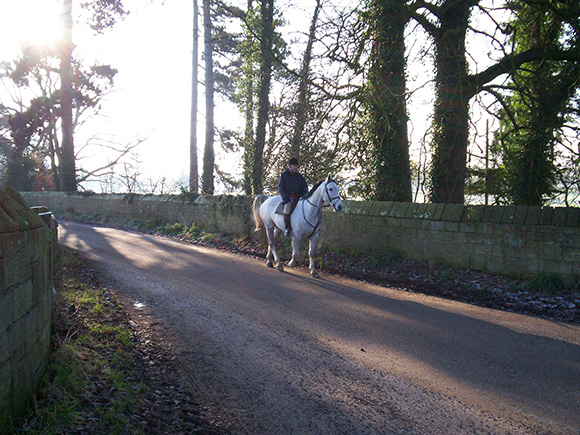
In the U.K., the driving test includes salient information about how to handle an encounter with horse traffic. In the U.S.A. however, riding on the road can be a more dangerous task, as the U.S. driving test does not include any requirement from drivers to know how to navigate around horses that may be sharing the road.
This doesn’t mean that horse keeping in your backyard isn’t an option, as many people in rural areas have direct access to fields and state parks adjacent to their lands or can easily purchase a small trailer for taking their horse elsewhere for lessons and training opportunities.
If you are contemplating a ‘Plan B’ here are a few tips to help you avoid common mistakes and some ways to save money.
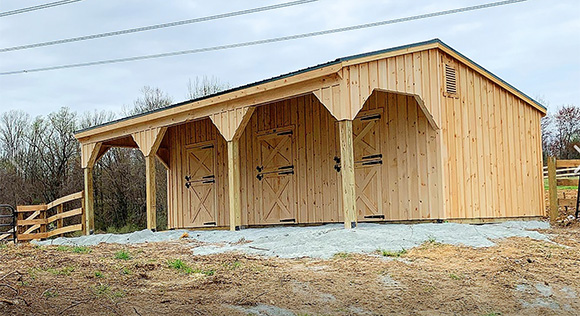
Permits and Land Use
The first step to planning construction of any horse barn or paddock fencing is to know the rules for permits and land use in your neighborhood. A call to your local authorities, in particular the Zoning Officer if you have one, will answer questions as to what distances from your property lines back, front and side are needed to site fence lines or structures and what size/type of structure you are allowed to build and most importantly, how many horses per acre you are allowed to keep on your property.
Carefully consider the site you choose for your building. Wise choices made now will save much heartache later!
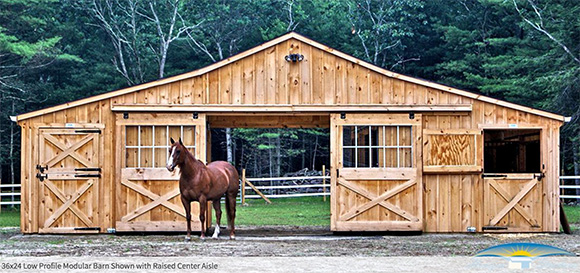
These regulations vary widely from town to town and state to state, so it always pays to check before you start purchasing supplies for construction.
If plans for the horse barn are required one of the cheapest ways to have them completed and quickly in the hands of the official, is to reach out to a modular or prefab building company for your building purchase.
Not only will they provide plans (certified by an engineer for an extra fee is needed), they can also offer almost instant delivery. Run-in sheds that can be converted to stalls as required are a budget friendly option, as are shed row barns and low profile barns. Run-in sheds also provide great storage options for hay and bedding supplies. Check out what the company has available for immediate delivery on their lot, as these buildings are not only all set and ready to go, but are often also offered at a discount. The huge advantage is that you get a known quality end product with warranties at a set to the penny delivered price. You also avoid the mess, delays, noise and hazards of on site construction.
If you are unfortunate and live in a neighborhood where a fixed or permanent horse structure is not allowed, consider a portable prefabricated run-in shed with tow hooks attached to each corner. In many areas the portability of the building categorizes it as a non-permanent structure and it can be a way to circumvent the restrictions legally. Check your applicable local ordinances to be certain.
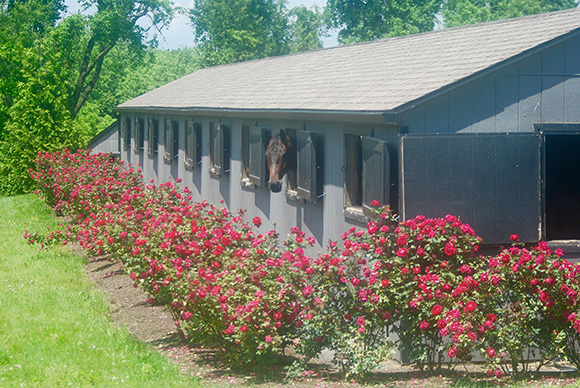
Water and Electric Services
Don’t forget to consider both the costs of water and electric service per month, and the need for access and construction to the barn or paddock for their provision.
In areas such as the North East that suffer bouts of temperatures in winter that can go well below freezing, always bury water pipes 4-6 feet below ground level depending on your location and install a frost free faucet.
Water troughs can be kept ice free by the addition in winter of a tank heater, either caged version kept out of reach of the horses or a plug in variety at the base of the tank that can be fed electric by a heavy duty extension cord and plugged into an outside GFI protected outlet.
Fencing
The smaller the acreage the more secure your fencing needs to be. Robert Frost's use of the phrase in his poem, "Mending Wall," published in 1914. He writes, "Good fences make good neighbors.” A proverb with much truth!
The more confined the horse the more it may push the boundaries both figuratively and literally. Ensure the height of the fence is adequate for the breed and gender of the horse. For example, a 17hh warmblood stallion that you use for jumping probably won’t stay confined in a 4’ high board fence. A usual height of 5’ or 5’ 6” inches is preferable for larger horse breeds with a 4’ 6” standard height for most equines. Remember your present horse may be one size, but always plan on future needs too. If your kid has a pony at 13.2hh, it won’t be long before they outgrow it and need something larger.
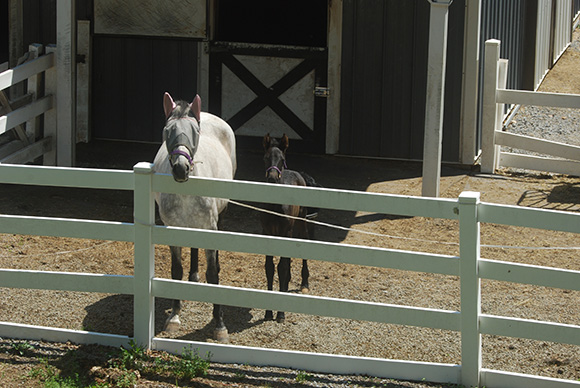
Consider a solid fence with an interior line of electric wire to help prevent chewing of wood boards, or utilize a modern low maintenance product such as PVC that provided a strong visual deterrent to escape. There should be a distance of 9 inches between the lowest board placement and ground level, to avoid horses’ legs becoming caught underneath the fence, especially when rolling. The distance between boards should be similar. Small gaps can trap tiny hooves. Never use barbed wire for horses. It is a recipe for disaster and will result in hefty vet bills and can seriously cause serious injury to horses.
There are many options on the market so review them all before making a decision. While you want to keep fencing on a budget, the cheapest options are usually not the most secure or safest for the horse.
Pasture Maintenance
When your horse has access to a limited amount of pasture, keeping the quality of grazing at a good nuritional level can be difficult. It is better to have two paddocks rather than one, as you can then rotate the grazing which allows time for one pasture to be rested.
A general rule is to allow one acre of grazing per horse, but in my experience this is not enough if the horse is to be free grazed the majority of the time. An overgrazed pasture is a health hazard to horses for several reasons.
Very short grass leaves horses susceptible to insulin resistance, metabolic disorders of any kind, or laminitis issues at higher risk for incidence of disease because it is contains more sugar than longer grasses. Overgrazing can result in a dusty dry lot that weeds will quickly pervade. This removes healthy vegetation and can replace it with noxious or toxic weeds that normally a horse would avoid grazing given it had other healthier options, but it might be tempted to nibble if hungry with no other options. Additionally the worm count on pasture can be very high even if manure is regularly removed. Here’s a great article on parasites and pasture management.
Small paddocks may mud and become a health risk for horses that can suffer from pulled tendons or ligaments and mud fever.
All pasture needs some form of management. Application of lime may be needed every few years to help control weeds and build the nutrients in the soil. Soil test kits are cheap to obtain from your local agricultural extension office, and can point you in the right direction for what fertilizers or nutrients to add without causing unnecessary expense blindly buying the wrong products. The pasture will need to be rested from grazing when over-seeded in frost season or after application of fertilizers.
Consider adding a dry lot in your paddock design and purchase a specialized all weather footing from an equine expert that will withstand heavy traffic and turn out year round. This can also be very useful for limiting the grass intake for horses with metabolic disorders or ones that require a ‘nurse’ paddock during recovery from lameness issues.
Scoop the Horse Poop
Sorry but there is no way around this when you keep horses. Not only should the stalls be mucked out and cleaned a minimum of twice a day, but also the pastures should be picked too. What can you do with the resultant manure pile?
Manure disposal services are available in some regions (and in some states such as Massachusetts, they are mandatory in certain areas), and a container can be provided at your property and picked up for emptying on a set schedule.
You can compost the manure and use it in your gardening endeavors, and perhaps share it with neighbors for their planting and gardening needs too. Horse manure is well known as the perfect fertilizer for roses, and it can also be possible to sell it as they do in the U.K. for so much per manure filled garbage bag.
A barn where I regularly used to give clinics had a huge container dropped off by a large supermarket chain. The company would take the manure away for use in their organic garden efforts.
Get as creative as possible. In any event, don’t place the manure pile close to the neighbors’ properties or close to your house, as the pesky bugs, rodents, even snakes it attracts together with the ‘aroma d’equine’ will only cause upset to the humans living nearby.
Will You Need A Companion Horse or Equid?
As herd animals keeping a horse alone can add much stress to its life. If you don’t have a 2nd horse consider a donkey, mini or smaller animal such as a goat for companionship. These will cost much less to keep!
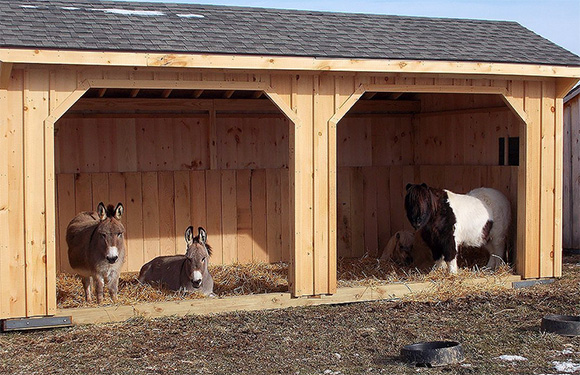
Don’t Forget The Supply Costs
Aside from the funds needed to buy a horse housing structure and fence an area to confine the horse(s), backyard horsekeeping involves other regular costs:
• Hay supplies and a dry place to store them will be required. A horse requires an average of 15# of hay/fiber per 100 # of bodyweight per day. Factor in the costs for purchase and transport in your budget. The more you are able to store and the larger quantity you can purchase at once the cheaper it will be per bale. Consider utilizing a hay feeder to minimize wastage (it can save up to 30% of hay costs). Purchasing hay direct from the producer during hay season and buying hay off the wagons is often the cheapest way to purchase.
Learn about safe hay practices for storage and how to choose good hay.
• Bedding with shredded paper, wheat straw or wood shavings will also be required and need storage. Only utilize pine shavings and avoid mixed wood ‘loose’ options that cannot guarantee no harmful cherry or walnut shavings/sawdust in their content from sawmills, as these woods cause laminitis in horses on contact! The addition of rubber mats within a stall can save substantial costs in bedding supplies as well as provide an ‘arthritic’ cushion to the damp ground and protect the horses’ legs from damage caused by slipping on a concrete pad, especially when shod.
• Grain and supplements for your horse should be kept out of the heat and in bins that protect the supply from rodents.
• Horse care provider visits such as the farrier and vet may cost more when these folks are coming to your backyard for one or two horses versus going to a large commercial barn where they receive income on a regular basis for larger herds and thus charge less per procedure or barn visit. Many vets offer Spring and Fall ambulatory check up clinics and discount barn call costs, vaccination and teeth floating costs, so ask for their schedule.
Finding the Time
If you are busy with other commitments outside or inside the home, design your paddock placement and barn layout to allow free inside/outside access 24/7 for your horses. This cuts down on labor and provides a healthy lifestyle for your horse. You can learn more about these benefits here.
In conclusion bringing your horse home is a project that requires careful consideration of the costs, time and labor that will be involved.
However, the pleasure of spending more time with your horse and less time commuting to see it, plus the control you have over its activities and diet can be well worth the effort.
Good luck!
